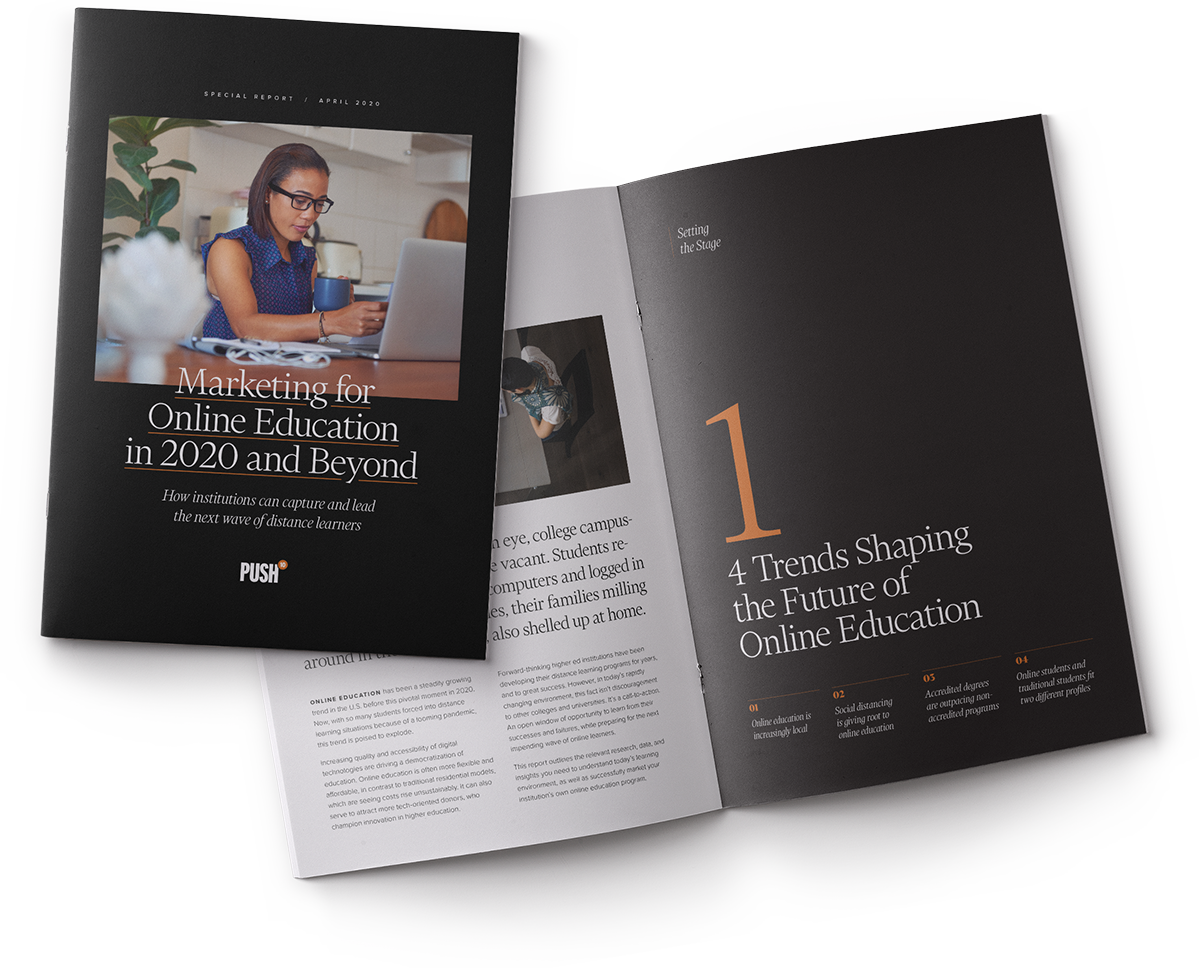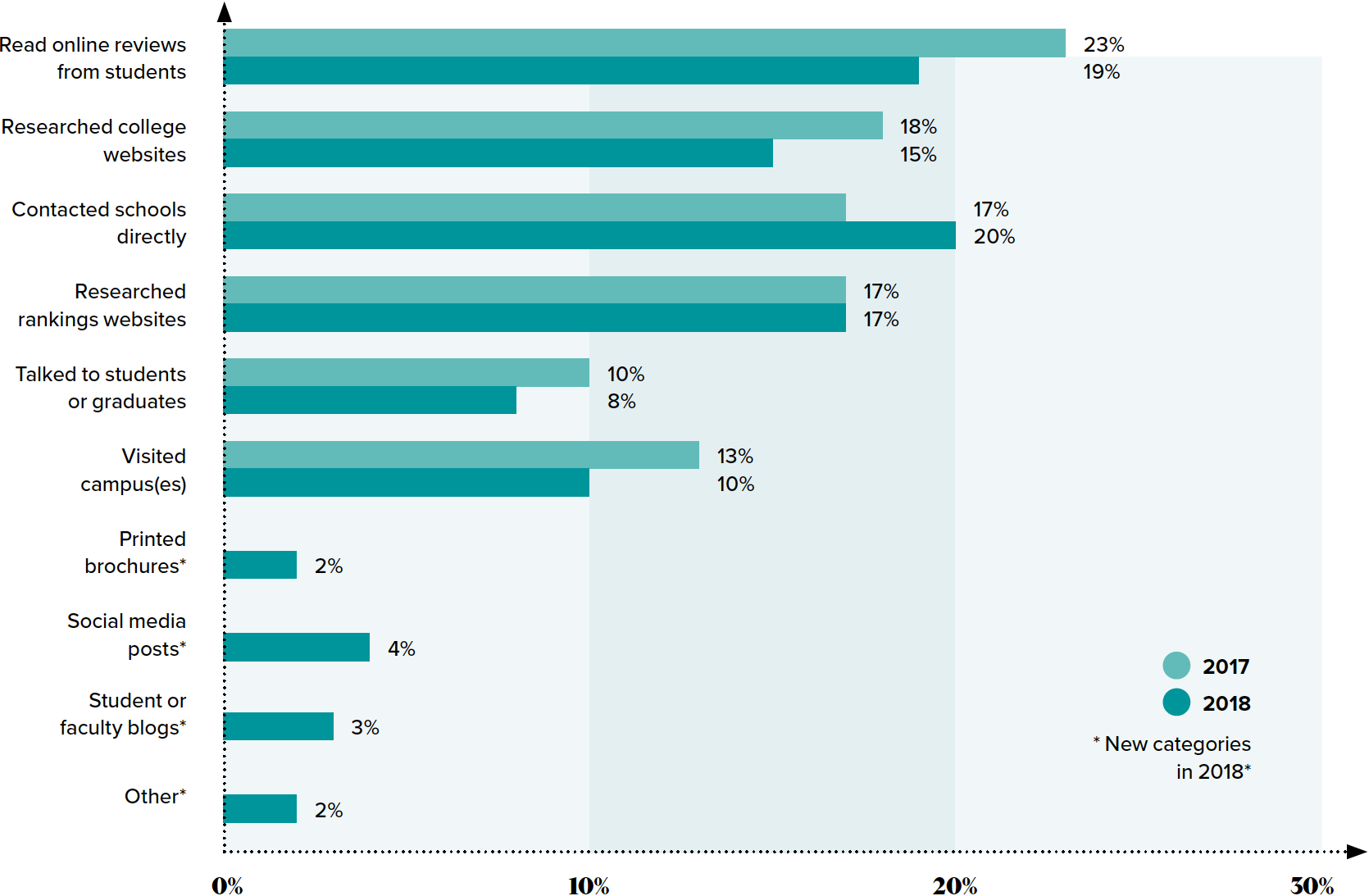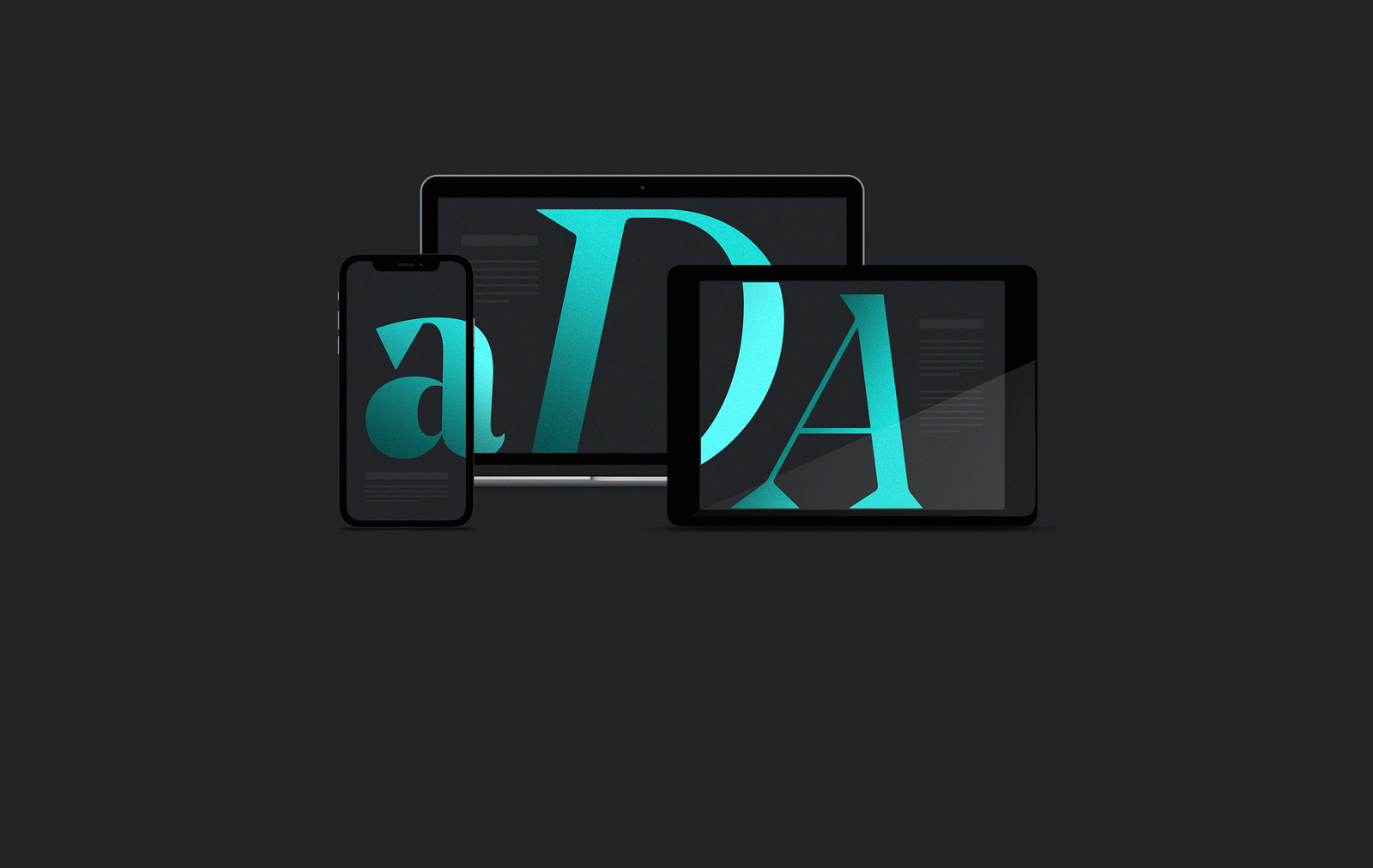Forward-thinking higher ed institutions have been developing their online education programs for years. Now that COVID-19 has taken a bite out of traditional learning models, however, the next opportunity for distance learning is here.
It’s not too late for learning organizations to capitalize on the online education game. Prior to the coronavirus pandemic, distance learning was on the rise. And with so many students recently forced into online learning experiences, this trend will only grow with more learners and administrators becoming comfortable with the model.
One big challenge stands in the way of educational institutions’ success: marketing these programs effectively. How can you differentiate your online ed experience from similar programs?
In this case, there’s promise in preparation. Where should you start? Scroll to the form below to download our full report on online education marketing, or keep reading for the four things you should remember when planning your strategy.

Start with a documented brand strategy
Look at some of the leading online education providers, and you’ll find that there’s no single answer to successfully branding your program. However, one thing is clear: leading institutions have a thoughtful and deliberate strategy behind their brand.
A logo is likely the first thing that comes to mind when thinking about your brand. It is important, but only one slice of the pie.
When developing a brand strategy, consider every aspect of your program’s reputation, including: Logo, brand mission/vision/values, voice & tone, messaging, and promised experience. This documented strategy should find the intersection of what makes your program unique, and what online learners find valuable.
A strong brand strategy remains true to your organization, provides value to the people it serves, and stays aware of the world we live in.
Develop an agile, iterative model
Education is changing every day. But as a tech-driven segment of education, online learning is changing even faster.
The top online learning programs lean on the equity of their parent institution’s name for branding purposes, but it is also important to maintain a level of separation between each entity. Online education programs should be treated more so as a “lab” than a static institution, drawing from the resources of the parent institution while staying nimble, fluid, and iterative.
To this end, an open feedback loop between students and system administrators is critical. Information learned from the real users of your online program allows you to continuously improve your system, while hearing first-hand what your students care about. This is the type of intel that can, and should, inform your marketing approach.
Help students make an easy decision
As the industry grows, so will the number of options students have to choose from. Marketers should aim to make this decision easier.
Data shows that students are primarily reading reviews, researching college websites, and contacting schools directly to inform their choice. And, students looking back wish they would have compared more programs and done more research about cost and financial aid more than anything else.

Embrace transparency. Address these questions through content, comparison charts, and student testimonials on your website. When students feel informed, they feel confident. Marketers need to seize this opportunity to be the ones who made them feel that way. It may be the first and only opportunity to build trust with prospective students.
Make ADA compliance a priority from the outset
ADA compliance matters now more than ever. Just as you might establish business goals and KPIs at the start of the project, it’s also important to set an intention around accessibility before any design is drawn or code is written for your online education platform.
The concern for learning institutions is not solely about dodging lawsuits (though they can be a costly consequence of inaccessible websites). Achieving ADA website compliance demonstrates that your organization is committed to making education available to all. With as many as 25% of Americans living with a disability, you are potentially excluding an enormous number of people from your website if it doesn’t meet accessibility standards.
In the initial planning phase of your online education project, make sure to include a knowledgeable voice on ADA website compliance and WCAG guidelines specifically. Depending on the level of compliance you hope to achieve, the decision you make will impact how your platform is both designed and built.
Ready for a deeper dive into online education marketing?
Download the free report:



